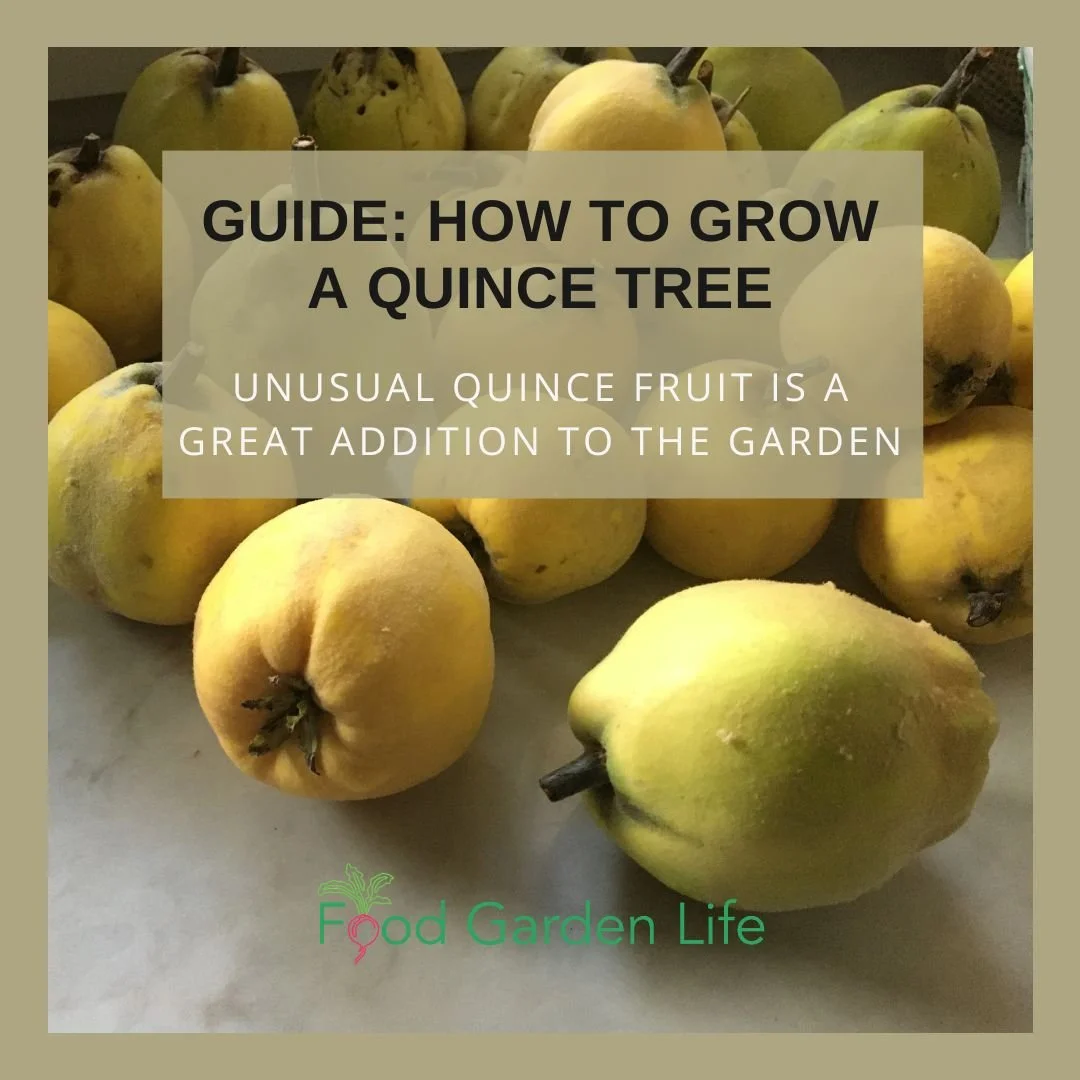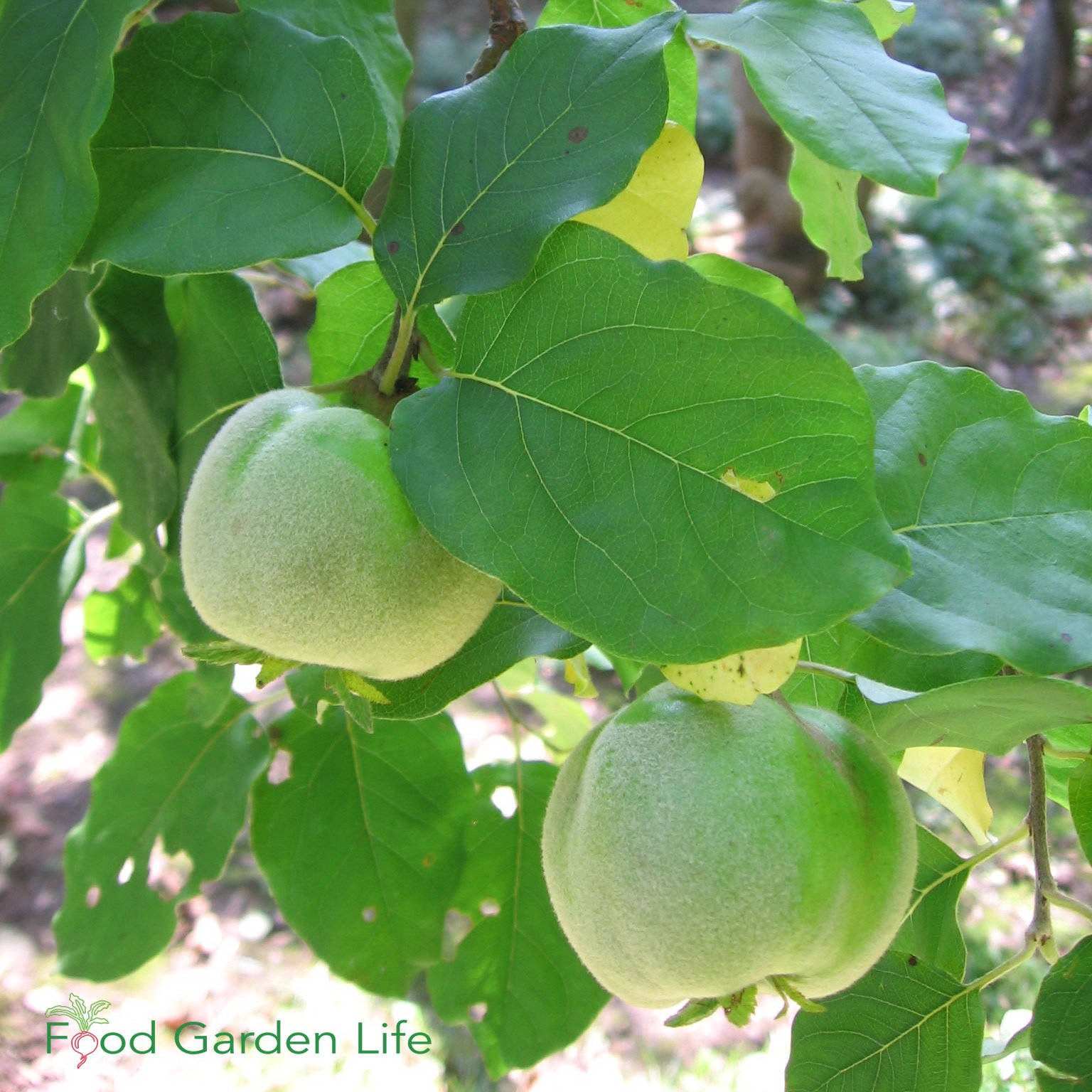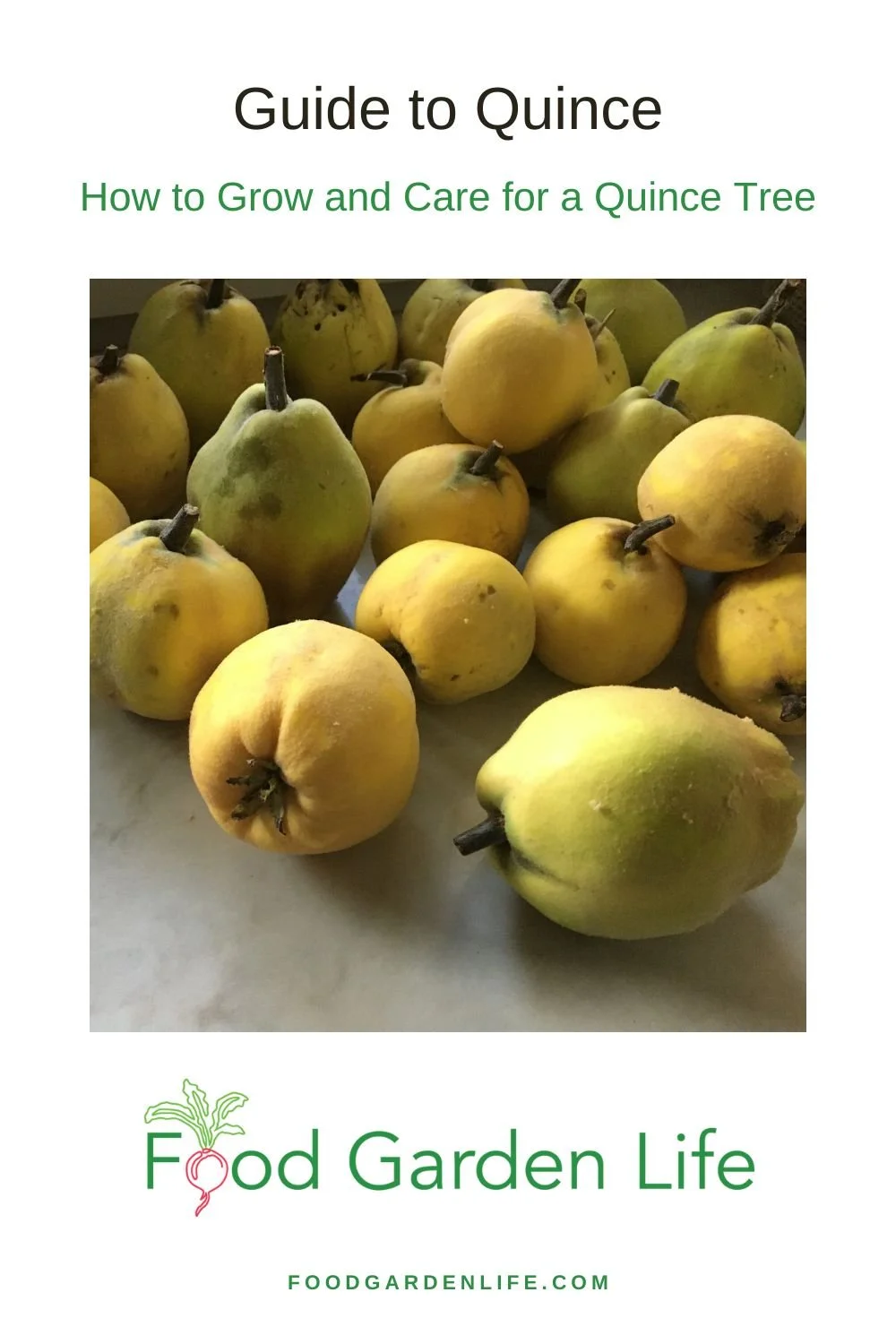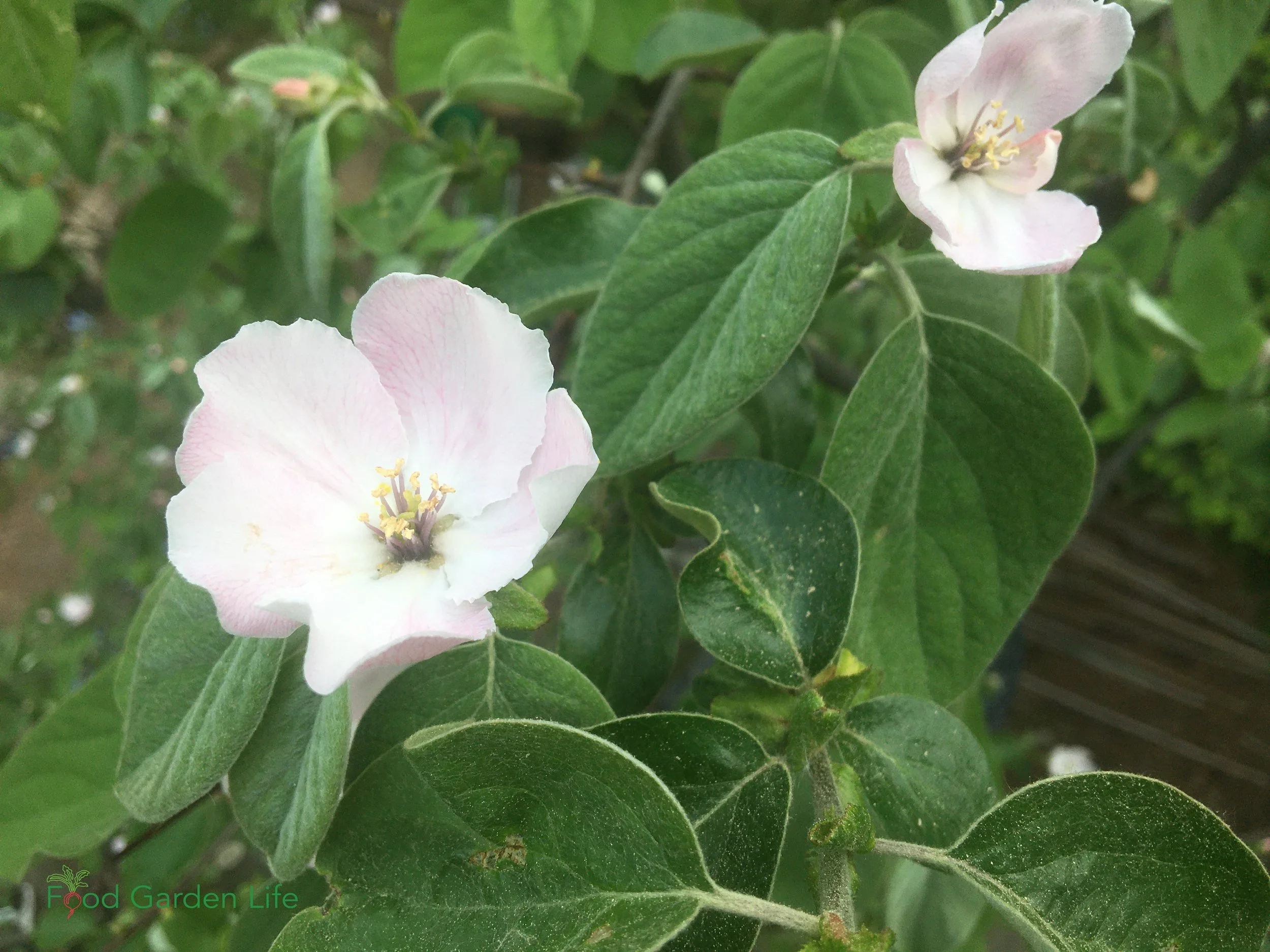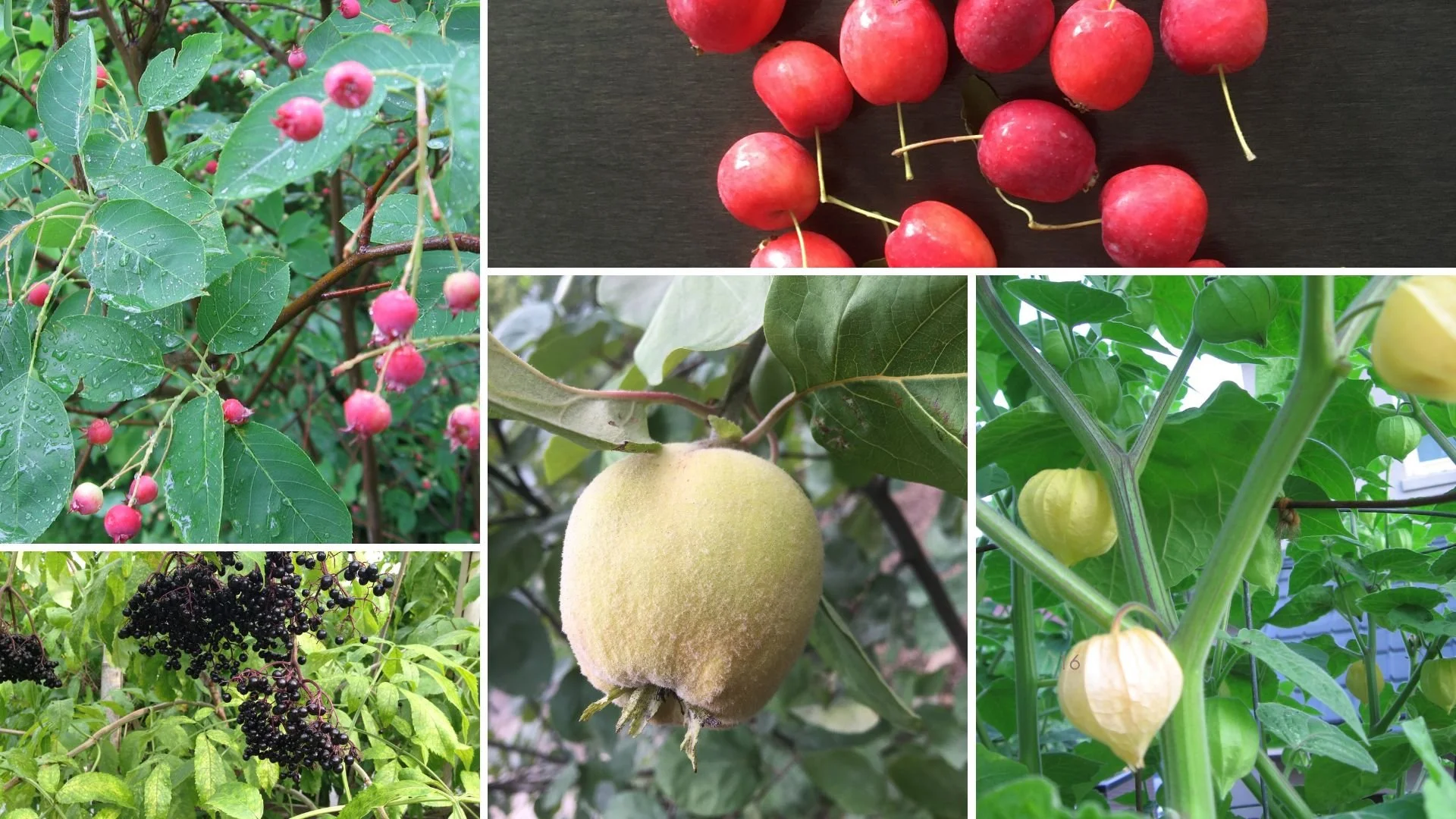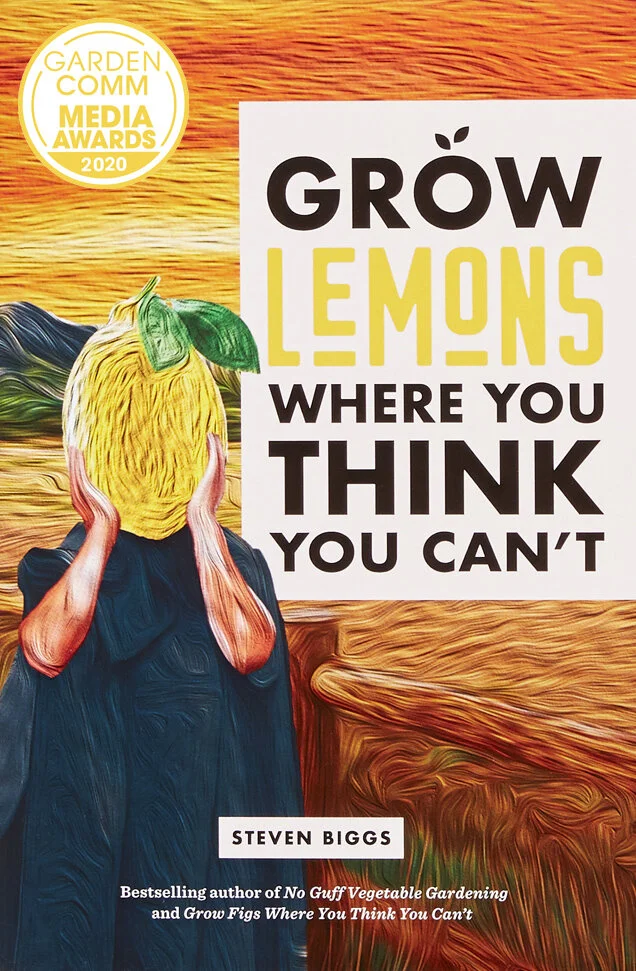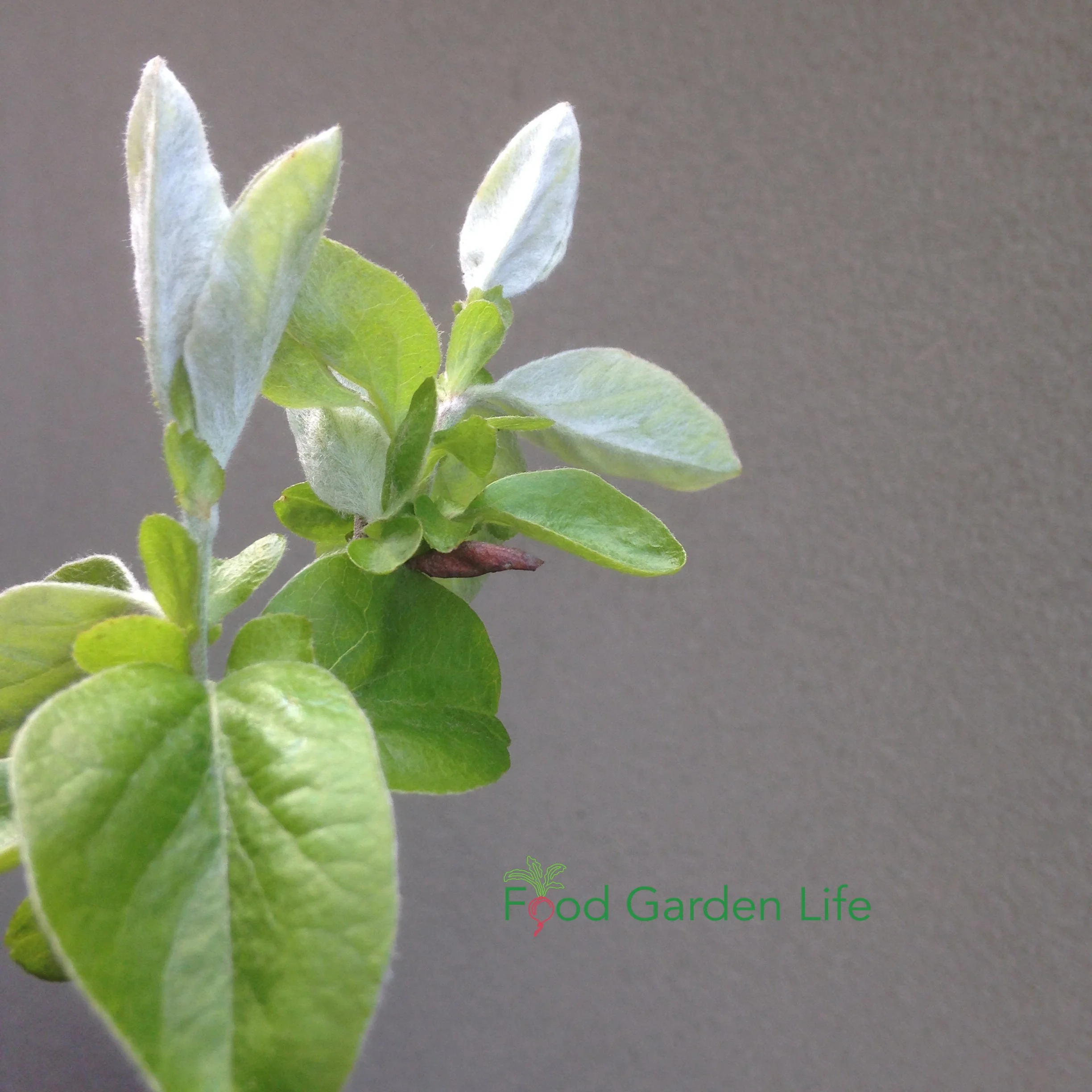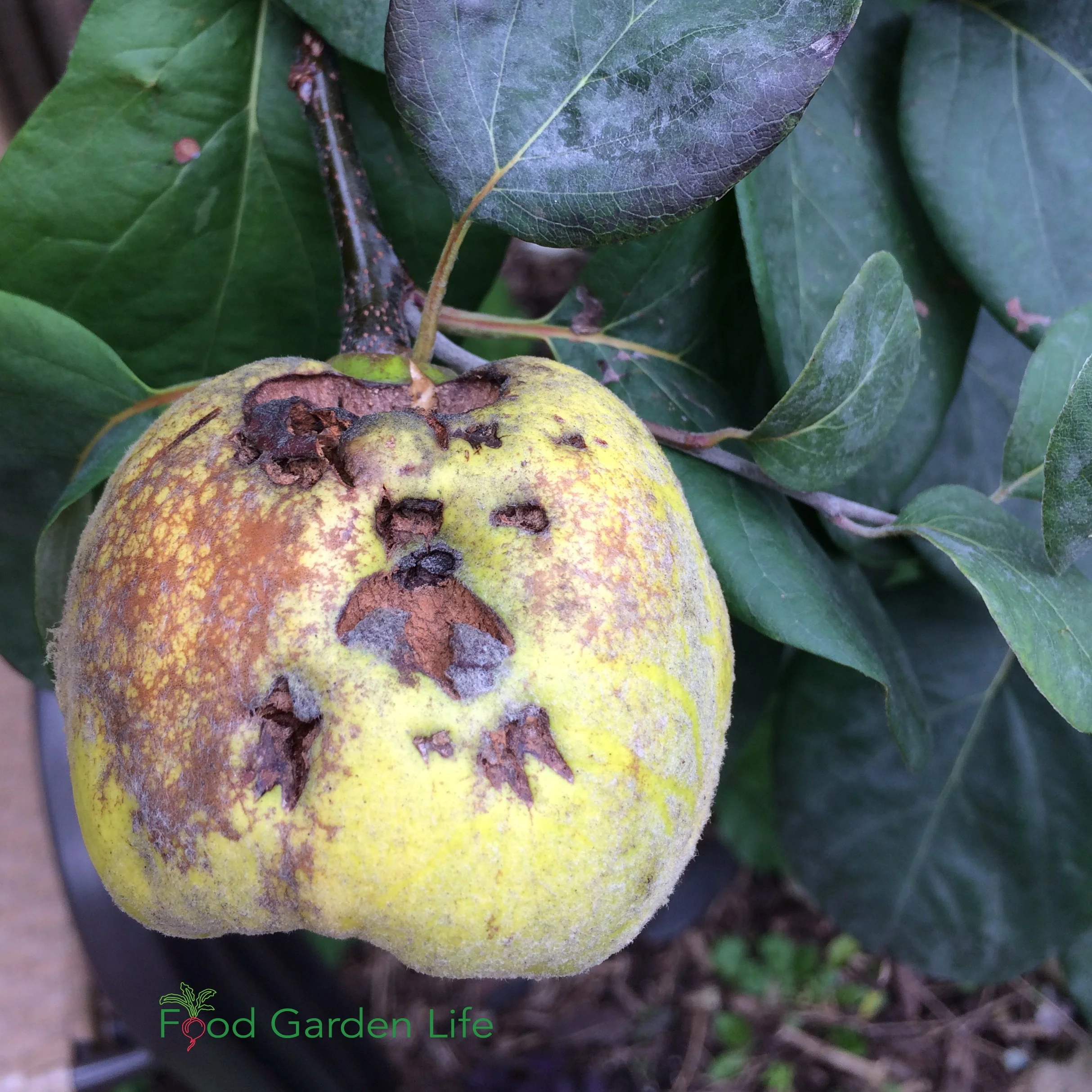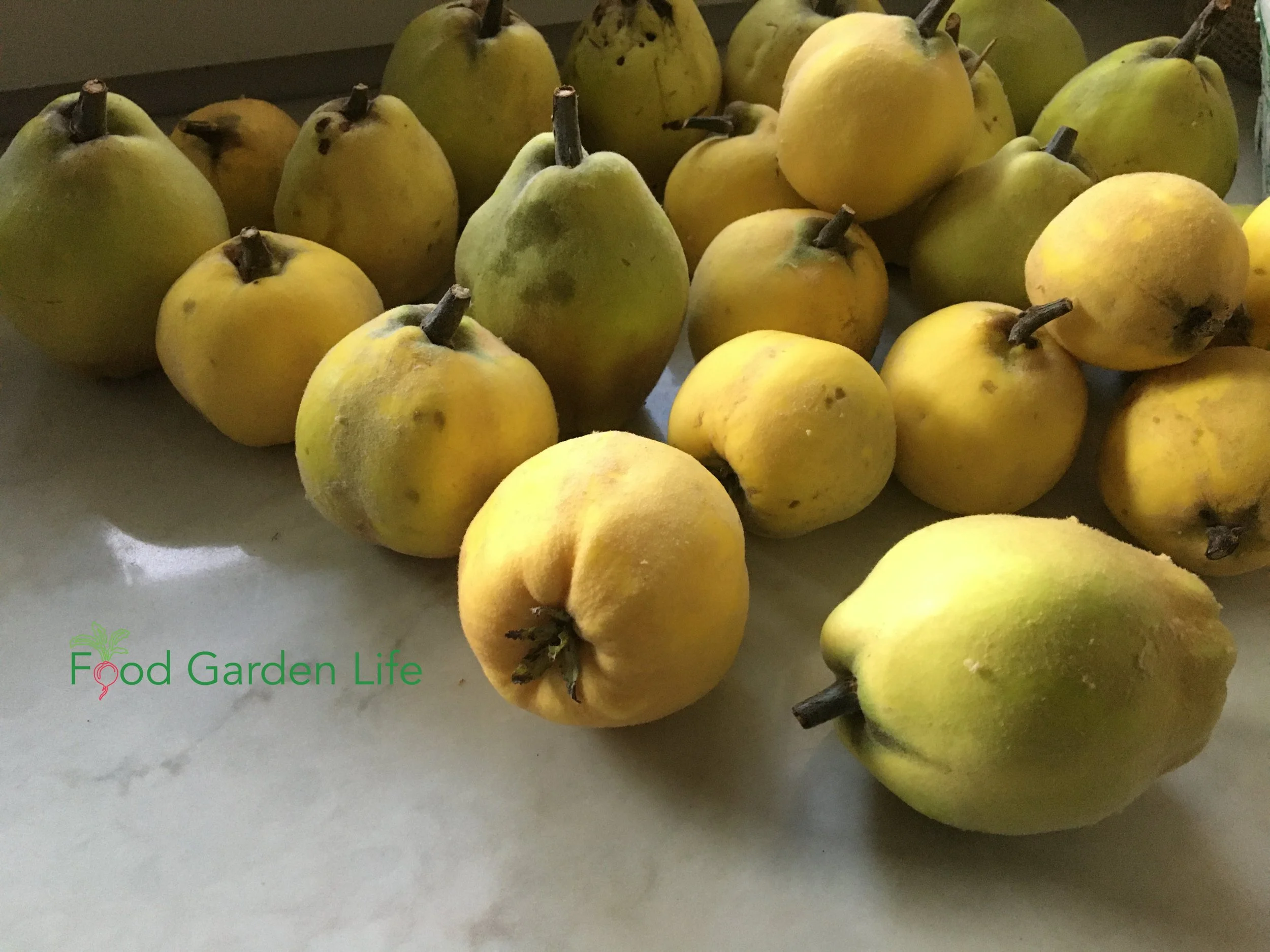Guide: How to Grow a Quince Tree
By Steven Biggs
Unusual Quince Fruit a Great Addition to the Garden
Quince fruit grows as a bush or small tree, and is a great fit for a home garden or edible landscape.
It’s rock hard. But looks soft and fuzzy.
It’s tart. But smells sweet…so sweet you wish you could eat the smell.
It’s quince fruit. And since I started growing a trio of quince trees in my Toronto garden, I’ve had fun experimenting with this versatile ingredient.
It works well in desserts:
Added to apple sauce
In an apple pie
It’s also great in savoury dishes:
Cooked in a tangine with meat
Pickled or poached
In my part of the world quince is hardy—but rarely found in home gardens or orchards.
But that doesn’t mean there are no quince roots nearby…because quince is often used as a rootstock for pears and medlar. (Read more about medlar here.)
Quince trees are easy to grow, but rarely grown in orchards and home gardens.
How to Grow Quince
Quince is an easy-to-grow tree fruit suited to home gardens, edible landscapes, and food forests. This guide to how to grow quince tells you what you need to get started.
Quince (Cydonia oblonga) is a naturally dwarf tree that grows 3-6 metres (10-20 feet) high. This makes it a fine choice for home gardens.
(It’s different from a common flowering landscape bush called Japanese quince or flowering quince, Chaenomeles spp.)
The quince fruit tree is related to apples and pears, so it’s no surprise that the fruit can resemble either. Some varieties give pear-shaped fruit, while some are apple-shaped. They are fuzzy, and ripen to a golden colour.
Pin this post!
The fruit grows on year-old wood and short spurs. Branches often droop from the weight of the fruit growing near the tip.
Best Location for a Quince Tree
Sunlight
Quince trees do best in full sun, but are tolerant of partial shade.
Sun helps with fruit ripening, so in areas with a short growing season, the more sun the better.
Soil
Quince grows in a wide variety of soil types. A well-drained soil that holds moisture is ideal. Dry, sandy soils are the least ideal.
They tolerate more soil moisture than many fruit trees, meaning that if you’re planting your yard and have a spot with moist soil, save that spot for the quince tree. (Moist is OK; waterlogged is not.)
Amend light and heavy soils with organic matter before planting.
Quince Pollination
The solitary quince flowers look similar to apple flowers.
The solitary flowers look similar to apple flowers.
Quince trees are self-pollinating, which means you only need one tree to get fruit. However, you can get better yields if there is cross pollination with other quince trees.
Quince Pruning
Quince trees are naturally small, requiring less pruning than many other fruit trees.
You can grow your quince in a tree form or as a multi-stemmed bush. (See more on quince rootstock, below.)
Trees at garden centres will likely already have been pruned into shape for you (not always that well…)
If it’s an option, buy a “whip,” a young, single-stem, unbranched plant from a specialist nursery. This way you can shape it the way you want.
Pruning a Quince Whip - Formative Pruning
For the first couple of years, prune to develop the shape of your young quince tree.
A common approach with quince is to keep a length of unbranched trunk (about a metre, or 3 feet). Above that, develop an open-centred framework of branches. In short, an open-centred tree. (Think of a goblet!)
(This goblet shape is common because quince can be difficult to grow in a “central-leader” style, which has a main trunk.)
Prune back your whip to where you want branching to begin. It may seem harsh, but you’re pruning to induce side branching (There are buds that you don’t see that will grow into side branches as you prune the top off of your whip.)
When you have a choice between which branches to keep, and which to snip, a wider angle is better than a narrower angle.
Landscape with Fruit
That’s easy to grow in a home garden!
Annual Quince Pruning
Once there’s a good branch structure on the quince tree, prune the annually in late winter, while it’s dormant. This annual pruning is to optimize the size and shape of the tree for fruit production.
We prune quince over the winter, while it’s dormant, to reduce the chance of fire blight infection. (See more on fire blight below.)
Here’s what to do:
Remove crossing and crowded branches…quince can get quite choked up with willy-nilly growth
Cut out dead and broken branches
Remove suckers that grow from the base
Trim back the top of the tree if it gets too high
Shorten side shoots
Remove shoots growing from the base of the tree (the unbranched portion of the trunk)
If you’re gardening in a small space and a tree form is out of the question, quince on dwarfing rootstock can be grown in a bush shape. Quince trees can also be trained into a fan shape and grown on a wall.
Quince Tree Rootstock
Like most fruit trees, commercially produced quince trees are usually grafted onto “rootstock.” (A variety with nice fruit is grafted atop a variety that has roots with a desirable trait, a.k.a. the rootstock.)
The choice of rootstock determines the size of the tree. Two common quince rootstocks are Quince A and Quince C.
Quince A rootstock is more vigorous than Quince C, allowing trees to get up to about 5 metres (15 feet) tall. It is suited to growing as espaliers and trees.
Quince C rootstock has a dwarfing effect, giving a tree that gets 3-4 metres (8-12 feet) tall. If you want to grow quince in a bush shape, look for this rootstock.
Home Quince Tree Propagation
Home gardeners might opt to grow quince from seed. It grows easily from seed. Just know that the seed will give you something different from the fruit it came from…perhaps better, perhaps not. You won’t know fruit quality, tree size, fruitfulness until your seed-grown quince tree matures...years later.
Seed-grown quince can be used as rootstock if you have known quince varieties that you want to propagate by grafting.
Quince trees can also be reproduced cuttings and layering (where you bury a low-lying branch.)
Quince Varieties
There are not many quince varieties available commercially. Some varieties have fruit with an apple-like shape; and some are pear-like. Here are three common quince varieties that I’ve seen for sale here in Ontario:
Meeches Prolific. Vigorous variety with flavourful fruit.
Champion. Medium fruit on a vigorous plant.
Vranja. Strongly scented, large fruit.
Planting Quince Trees
Prepare the ground as you would to plant most trees and shrubs, by digging a hole that’s as deep as the roots—but wider.
Once the tree is in the ground, check to make sure that you’ve planted it at the same height—not deeper, not shallower. Then backfill the hole using soil amended with compost.
Get Your Fig Trees Through Winter
And eat fresh homegrown figs!
Quince Tree Spacing
Because it’s a small tree, it’s great for home gardens. I have a trio of quince trees in a 3 x 3 metre patch (9 x 9 feet).
As with other fruit trees, the spacing recommended for orchards isn’t needed for a home garden.
Remember that seed-grown trees and grafted plants on Quince A rootstock need more space than trees grafts on Quince C rootstock.
Quince Trees in Permaculture and Forest Gardens
Because quince trees are relatively short and tolerate some shade, they can be useful when developing plant layers in a garden.
For example, taller trees can be hemmed with quince, under which are shade-tolerant fruit bushes such as currant. Think of a forest edge setting.
Using Quince Trees in Garden Design
Fuzzy young quince leaves have a silvery colour.
Quince is a great dual-purpose tree—edible and very ornamental.
The fuzzy leaves, springtime bloom, attractive fruit, gnarly branches, and peeling bark on older trees make them stand out in the landscape, particularly in winter.
(And if you’ve ever been smitten with the silvery sheen that comes from an olive tree, young quince leaves have the same effect. Read more about potted olive trees here.)
Quince Tree Care
Grown in a fertile soil, you might find that the only annual care you need is pruning.
If feeding, the main caution is not to give too much nitrogen. That’s because too much nitrogen stimulates rapid vegetative growth—and that growth is more susceptible to fire blight (see below). For this reason, avoid composted animal manures, and instead choose composted leaves when amending soil.
Quince Tree Hardiness
Where do quince grow? Quince trees are less hardy than apples, generally hardy in USDA zones 5-9. They can take temperatures down to about -26°C (15°F).
BUT…many gardeners grow them in colder zones. If you’re gardening in a cold climate, look for varieties recommended for borderline areas—and when planting, look for protected microclimates.
Want tips on planting fruit in cold climates? Tune in here.
Interested in hardy apples? Check out this episode of The Food Garden Life Show.
Quince Tree Challenges
As a relative of apples and pears, quince suffers from many of the same afflictions.
Fire Blight
Fire blight on quince.
This bacterial disease is the scourge of European pears, quince, apples, mountain ash, and hawthorn. The bacteria get into the plant through flowers, wounds, and pruning cuts made early in the year.
That’s why it’s best to stick with winter pruning for quince.
With fire blight, you’ll see leaves suddenly wilt and then turn brown, giving a scorched-like appearance. When that happens, prune back at least 10” below the infected area. Don’t prune around flowering time. Clean your pruners with alcohol or bleach between cuts to avoid spreading the disease.
Fire blight is more of a problem in areas with warm, humid conditions.
Codling Moth
The young caterpillars of this moth tunnel into the fruit, and exit a few weeks later, well before you harvest your quince. Like all pests, some years there are more…and some, fewer.
In a home garden setting, I suggest accepting coddling moth. They go to the core, for seeds—and since you cut up quince before eating it, can cut out the tunnel and the core, removing evidence of these pests in the quince you’re using.
Squirrels
As an urban gardener, squirrels are my biggest quince challenge!!!###.
The main things they do to my quince are:
Bite marks on young fruit as the squirrels taste their way around my garden
Outright fruit theft as the quince fruit ripen
If you don’t have too many quince fruit, consider using organza bags over the fruit as a deterrent. Netting is possible too if you have a short tree or a bush (but it’s ugly!)
Bite marks on young fruit as the squirrels taste their way around my garden.
Harvest Quince Fruit
Harvest quince in the autumn, as they turn a golden-yellow colour. Pick before frost for best fruit quality.
Note: Even though quince fruit are hard as rocks, they bruise very easily. Be gentle.
Pick quince with secateurs in hand as the fruit don’t easily break off from the stem like apples do. By cutting off the fruit you’ll avoid damaging branches.
Store Quince Fruit
The fruit continues to ripen once picked and stores well in a cool, dark area free from frost. Having said that, I often just leave quinces on my kitchen counter until I’m ready to use them. They can last a number of weeks. They don’t last quite as long as they would somewhere cooler…but with the volume of quince I grow they’re long gone well before we get to that point. And they look beautiful and smell amazing.
Because quince has a strong scent, store away from other things that could absorb the smell. (Yes, away from your apples…unless you want them to taste like quince!)
Quince Fruit in the Kitchen
I often leave quince fruit on my kitchen counter until I’m ready to use it.
If you’re new to quince, use them in a simple recipe where the flavour shines through. Here are ideas:
Poached in a light syrup with vanilla and lemon juice
Added to apple sauce
When you make jam from quince, it changes colour and goes pink, then red. It’s beautiful! And on that note, quince fruit is very high in pectin, making it very well suited to using for preserves.
Here’s a recipe book dedicated to quince: Simply Quince, by Barbara Ghazarian.
Quince Tree FAQ
What if I forget to prune one year?
Your tree will be fine if you don’t prune. We prune to maintain the size and shape, and optimize fruit production.
Is it the same as my flowering quince?
Your flowering quince is sometimes called Japanese quince (Chaenomeles spp.). it, too gives rock-hard pectin-rich fruit.
When should I take quince cuttings?
When you prune your quince trees in late winter, keep that wood for use as cuttings.
AND here’s something you can do with any remaining quince branches you’ve pruned from the trees: Quince wood gives a flavourful smoke and is excellent for smoking meat. Use it in a smoker, or add it to a charcoal BBQ to enhance the flavour.
See how I roast my Thanksgiving turkey on a charcoal BBQ.
More on Growing Fruit
Fruit for Northern Gardens Masterclass
Landscape with Fruit
That’s easy to grow in a home garden!

